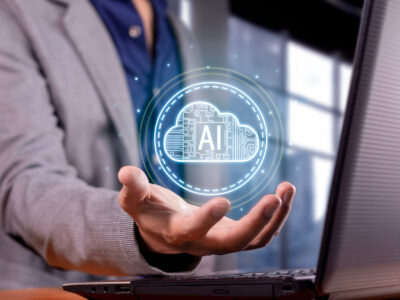Do Androids Dream of Eligible Patents? New Guidance on the Eligibility of Patents Involving AI
September 10, 2024
By R. Benjamin Peeler, IV
On July 17, 2024, the United States Patent and Trademark Office (USPTO) updated its guidance on the subject matter eligibility of patents involving artificial intelligence (AI). Prior to this guidance, many inventors and attorneys worried that patent claims involving AI would likely be unsuccessful because they feared that patents involving AI would fall into a so-called “judicial exception” for patent subject matter eligibility.
The Alice/Mayo test (created by the Supreme Court in the decisions Alice Corp. v. CLS Bank International and Mayo Collaborative Services v. Prometheus Laboratories, Inc.) stands for the idea that there are certain, non-statutory “judicial exceptions” to patent eligibility, which render an invention un-patentable. These judicial exceptions include laws of nature (e.g., gravity), natural phenomena (e.g., lightning), and abstract ideas (e.g., a mathematical equation). Unless the claims of these inventions recite additional elements that integrate the judicial exception into a practical application, the claim will be rejected. Many inventors and attorneys were particularly concerned that inventions involving AI would fall into one of these judicial exceptions and be ineligible for a patent.
However, this new guidance will address many of these concerns. The USPTO stated that it believes that “promoting responsible innovation, competition, and collaboration will allow the United States to lead in AI and unlock the technology’s potential to solve some of society’s most difficult challenges.” To that end, the guidance gives several examples of AI patent claims that do and do not fall under the judicial exceptions. One such hypothetical example in the new guidance of a claim involving AI that does not fall under a judicial exception is:
“An application-specific integrated circuit (ASIC) for an artificial neural network, the ASIC comprising a plurality of neuros organized in an array, wherein each neuron comprises a register, a processing element, and at least one input, and a plurality of synaptic circuits, each synaptic circuit including a memory for storing a synaptic weight, wherein each neuron is connected to at least one other neuron via one of the plurality of synaptic circuits.”
Next, the USPTO explained how a claim might involve a judicial exception but integrate the judicial exception into a practical application, citing the example of “a cardiac monitoring device that analyzes beat-to-beat timing for atrial fibrillation and atrial flutter to more accurately detect the occurrence of these cardiac conditions”, as directed toward an improvement in cardiac monitoring technology and not an abstract idea.
While the USPTO is likely to issue more guidance in the future regarding the subject matter eligibility of inventions involving AI, this most recent step provides reassurances that the USPTO respects the technology and is not categorically opposed to the presence of AI or machine learning in patent claims. Rather the USPTO appears to be trying to ensure that it encourages innovation, without stifling competition.
Ongoing questions remain as to what extent AI can be involved in the drafting of a patent application, or the involvement of AI in design patents. Nevertheless, the USPTO’s guidance helps shed light on the critical question of whether an invention that involves AI can be patented, and what inventors should consider when seeking a patent on their invention.
Ben Peeler is an associate attorney with Flint, Connolly, & Walker, LLP specializing in intellectual property matters and corporate litigation. If you are interested in learning more about the legal ramifications of AI’s impact on patents, or are seeking to file a patent application, contact Flint, Connolly, & Walker, LLP for a consultation.

